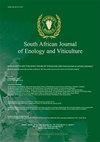Biological Deacidification Strategies for White Wines
IF 1.1
4区 农林科学
Q4 FOOD SCIENCE & TECHNOLOGY
引用次数: 3
Abstract
Traditionally, the use of malolactic fermentation gives rise to microbiologically stable wines. However, malolactic fermentation is not free from possible collateral effects that can take place under specific scenarios. The present work tests the influence of different biological deacidification strategies on the volatile and non-volatile components of white must from Germany. The study compared mixed cultures of Lachancea thermotolerans and Schizosaccharomyces pombe and a pure culture of Sc. pombe to the classical biological deacidification process performed by lactic acid bacteria. Strains of Oenococcus oeni and Lactiplantibacillus plantarum were co- or sequentially inoculated with S. cerevisiae to carry out malolactic fermentation. Different fermentation treatments took place at a laboratory scale of 0.6 L in vessels of 0.75 L. The instrumental techniques Fourier-transform mid-infrared spectroscopy (FT-MIR), high performance liquid chromatography (HPLC) and gas chromatography–mass spectrometry (GC-MS) were used to evaluate different chemical parameters in the final wines. The results showed the ability of Sc. pombe to consume malic acid in combination with L. thermotolerans without using S. cerevisiae or lactic acid bacteria. Fermentations involving Sc. pombe consumed all the malic acid, although they reduced the concentrations of higher alcohols, fatty acids and acetic acid. Simultaneous alcoholic and malolactic fermentations reduced malic acid by about 80%, while classical malolactic fermentation reduced it by 100%. Fermentations involving L. thermotolerans produced the highest lactic acid, ester and glycerol concentrations.白葡萄酒生物脱酸策略
传统上,使用苹果酸乳酸发酵可以酿造出微生物稳定的葡萄酒。然而,苹果酸乳酸发酵并非没有可能在特定情况下发生的副作用。本工作测试了不同生物脱酸策略对德国白须挥发性和非挥发性成分的影响。该研究比较了热耐受性拉昌卡酵母和裂殖酵母的混合培养物和纯培养物。pombe与乳酸菌进行的经典生物脱酸过程。用酿酒酵母共接种或顺序接种啤酒球菌和植物乳杆菌进行苹果酸乳酸发酵。在0.75L的容器中,在0.6L的实验室规模下进行不同的发酵处理。使用傅里叶变换中红外光谱(FT-MIR)、高效液相色谱(HPLC)和气相色谱-质谱(GC-MS)仪器技术来评估最终葡萄酒中的不同化学参数。结果表明,在不使用酿酒酵母或乳酸菌的情况下,与耐热乳杆菌组合使用的Sc.pombe具有消耗苹果酸的能力。涉及Sc.pombe的发酵消耗了所有的苹果酸,尽管它们降低了高级醇、脂肪酸和乙酸的浓度。酒精和苹果酸乳酸同时发酵可使苹果酸减少约80%,而经典的苹果酸乳酸发酵可使其减少100%。涉及耐热乳杆菌的发酵产生最高浓度的乳酸、酯和甘油。
本文章由计算机程序翻译,如有差异,请以英文原文为准。
求助全文
约1分钟内获得全文
求助全文
来源期刊
CiteScore
2.50
自引率
7.70%
发文量
1
审稿时长
>36 weeks
期刊介绍:
The South African Journal of Enology and Viticulture (SAJEV) publishes full-length original Research Papers, Research Notes and Review Papers on all subjects related to enology and viticulture. The SAJEV does not accept articles published in, or submitted to, other journals.

 求助内容:
求助内容: 应助结果提醒方式:
应助结果提醒方式:


